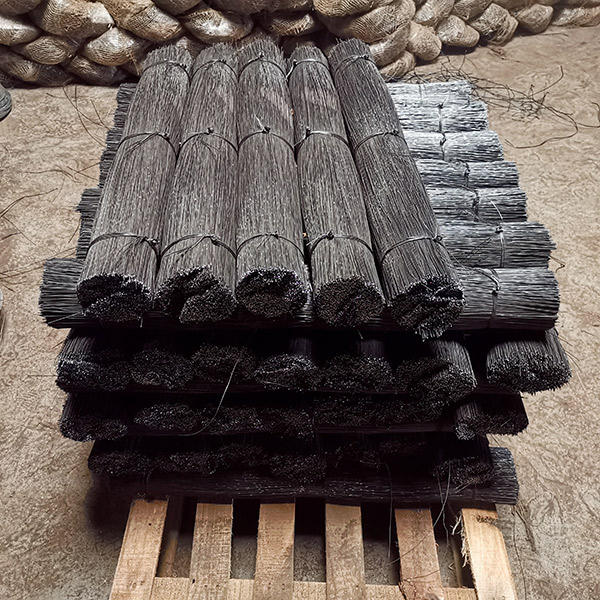Oct . 18, 2024 15:11 Back to list
Production of Binding Iron Wire in Manufacturing Facilities
The Role and Significance of Binding Iron Wire Factories
When examining the landscape of industrial manufacturing, one cannot overlook the critical role played by binding iron wire factories. These facilities specialize in producing a variety of iron wire products utilized in numerous applications ranging from construction to agriculture. This article delves into the significance of binding iron wire factories, their production processes, and their impact on various sectors of the economy.
Understanding Binding Iron Wire
Binding iron wire refers to a type of wire made from iron or steel that is primarily used for binding, fastening, or securing objects. It is characterized by its strength, durability, and flexibility, making it an essential material in numerous industries. The applications of binding iron wire are vast—ranging from securing materials in construction projects to assisting farmers in fencing and crop support.
The Production Process
The journey of binding iron wire begins with the raw materials—typically iron ore, scrap metal, or steel pellets. The manufacturing process generally encompasses several stages
1. Wire Drawing The initial step involves drawing the raw material through a series of dies, which reduces its diameter and increases its length. This process ensures that the wire attains the desired thickness and tensile strength.
2. Annealing After wire drawing, the wire may be subjected to heat treatment, known as annealing. This process enhances the wire's pliability and relieves any internal stresses, making it easier to work with in later applications.
3. Coating To protect against corrosion, binding iron wires can be coated with materials such as zinc or plastic. This extra layer of protection extends the lifespan of the wire, especially in outdoor or high-moisture environments.
4. Cutting and Packaging Finally, the wire is cut into specified lengths based on customer requirements and packaged for distribution. Factories may produce various sizes and gauges of wire, catering to a broad range of customer needs.
binding iron wire factories

Economic Impact
Binding iron wire factories contribute significantly to the economy by supplying a fundamental material used across various sectors. The construction industry, for example, relies heavily on iron wire for securing rebar, creating mesh for concrete reinforcement, and fencing. The demand for durable and reliable materials means that factories must maintain high production standards and constantly innovate to meet market needs.
In agriculture, binding iron wire plays a vital role in creating trellises, animal pens, and fencing. The agricultural sector benefits from the strength and affordability of binding iron wire, making it easier for farmers to secure their livestock and support their crops effectively.
Moreover, the binding iron wire industry also contributes to job creation, providing employment opportunities in manufacturing, logistics, and distribution. As factories expand and innovate, they can create a range of skilled jobs that support local economies.
Sustainability Challenges
Despite their economic significance, binding iron wire factories face sustainability challenges. The production process can be energy-intensive and may have environmental implications if not managed properly. As the global focus shifts towards sustainable practices, many factories are adopting eco-friendly initiatives. This includes utilizing recycled materials, optimizing energy consumption, and implementing waste reduction strategies.
Moreover, the growing trend of green construction and sustainable agriculture is prompting binding iron wire manufacturers to innovate. Factories are investing in research and development to create products that are not only strong and durable but also environmentally friendly.
Conclusion
Binding iron wire factories serve as essential pillars in various industries, driving advancements and supporting economic growth. By producing high-quality wire products, these factories play a crucial role in construction, agriculture, and other sectors. As the industry evolves, the emphasis on sustainability will likely shape the future of binding iron wire production, ensuring that it continues to meet the needs of contemporary society while minimizing environmental impacts. Emphasizing innovation, efficiency, and responsible practices will be crucial for these factories as they move forward in a rapidly changing industrial landscape.
-
Your Galvanized Steel Fence Factory - Strong, Durable Solutions
NewsAug.22,2025
-
Welded Wire Mesh for Industry: Factory Direct & Custom Solutions
NewsAug.21,2025
-
Welded Wire Mesh for Industry | Factory Direct & Durable Solutions
NewsAug.19,2025
-
Chain Link Fence-Anping County Puersen Hardware Wire Mesh Co., Ltd.|Durable Security&Versatile Applications
NewsAug.18,2025
-
Glass Food Storage Jar with Screw Wooden Lid - Anping County Puersen|Heat-Resistant & BPA Free
NewsAug.18,2025
-
Glass Food Storage Jar with Screw Wooden Lid - Anping County Puersen Hardware Wire Mesh Products Co., Ltd
NewsAug.18,2025

